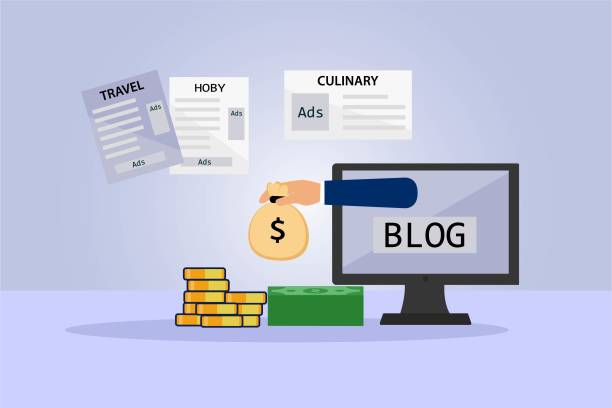
You want to start a blog without spending money? Free blogging platforms will let you launch instantly while learning the ropes although not without its downsides.
In this post, you’ll learn:
- What free blogging platforms are (with examples)
- The pros and cons of using free blogs
- How to start a free blog and make it profitable
- Why self-hosted blogs offer more flexibility and long-term earning potential
- How to write your first blog post and monetize it
🔹 Explore the best free blogging platforms to get started quickly.
What Is a Free Blog?
A free blog lets you publish content online without paying for hosting or a domain. Popular platforms include Blogger, Medium, and Wix.
Key features of free blogs:
- ✅ No upfront cost (no hosting or domain required)
- ✅ Beginner-friendly and easy to set up
- ❌ Limited customization and design control
- ❌ Your blog URL includes the platform’s branding (e.g.,
yourname.medium.com) - ❌ Monetization is often restricted or includes ads that you don’t earn from
Downsides of Free Blogging Platforms
- Your blog will live under brand sub-domain
- Search visibility is often very difficult (harder to rank on Google)
- Some platforms (like Wix) show their own ads, not yours
- Limited freedom to customize, brand, or scale your blog
- Monetizing options (like ads or affiliate links) are restricted
Why Self-Hosted Blogs Are Better for Long-Term Success
If you’re serious about blogging and want to make real money from it, a self-hosted blog (like one built with WordPress) gives you:
- ✅ Full control over your site and content
- ✅ Custom branding with your own domain name
- ✅ Better chances of ranking on Google
- ✅ Full access to monetization options like affiliate marketing, ads, and sponsorships
➡️ Learn how much it costs to start a self-hosted blog and why it might be worth the investment.
How To Start a Blog For Free and Make Money
[1]. Pick the Blogging Niche of Your Choice
Picking the right niche is crucial—it determines your audience, content, and income potential.
Honestly your niche selection is the single most important decision you’ll make as a blogger. It’s not just about what you’ll write about – it’s about:
- Who will read your content (and ultimately buy from you)
- What opportunities you’ll have to monetize (some niches earn 10x more than others)
- Whether you’ll burn out in 3 months or build a sustainable business
Here’s how to choose wisely:
1. Check Search Demand
You need a niche people are actively searching for.
- Use Keyword Tools like Ubersuggest, Ahrefs, or Google Keyword Planner to check keyword volume.
- Google Trends can show whether interest in your niche is growing or fading.
- Focus on long-tail keywords (like “yoga for beginners at home”) for easier ranking.
2. Evaluate Profit Potential
Not all niches make money—make sure yours can!
- Affiliate Marketing: Are there products you can promote for commissions?
- Digital Products: Can you offer eBooks, guides, or printables?
- Ad Revenue: Can you generate enough traffic for display ads?
- Sponsored Posts: Do brands in your niche pay for exposure?
👉 Use affiliate networks like Amazon Associates, ShareASale, or CJ Affiliate to find monetizable offers.
3. Study the Competition
A little competition is good—it shows demand—but too much can make growth hard.
- Google your niche keywords: Are the top results giant brands or smaller blogs?
- Use SEO tools (like Ahrefs/SEMrush) to check keyword difficulty.
- Look for a unique angle or underserved sub-niche to stand out.
Example: Instead of a broad travel blog, niche down to “budget travel for solo female travelers.”
Need help picking a niche fast?
- Check out our list of 15 most profitable blogging niches.
- Already have a niche? Explore these blog post topic ideas to plan your content.
[2]. Choose A Free Blogging Platform
Here are some of the best free blogging platforms
- WordPress.org – This is the most used blogging platform it requires a $2 – $3 web hosting to use. If you completely don’t want a free platform you can use other options below.
- Blogger: Blogger offers a simple and user-friendly interface ideal for beginners.
- Medium: A social publishing platform with a focus on high-quality content. It’s a good option for writers looking to build an audience within Medium’s existing user base.
- Wix: A website builder with a strong blogging component. It offers drag-and-drop editing for easy customization.
Pick Your Platform of Choice Above: WordPress
In this post we are going illustrate how you can use WordPress.org to start a standard blog for free which requires a third-party web hosting provider that will charge you less than $3 to get started.
If you entirely don’t want to spend any money you can use other free blogging options I mentioned earlier with limited features. If you want the platform without a limitation you can continue with WordPress.org.
- Step 1: Visit HostGator
- Step 2: Select your hosting plan
- Step 3: Register your domain name
- Step 4: Set your subscription period
- Step 5: Create your HostGator account
- Step 6: Install WordPress through HostGator
- Step 7: Pick a pre-built theme
- Step 8: Customize pages and publish content
Step 1: Click On Our “HostGator” Discount Link
Using our discount link you will get HostGator for less than its original price.
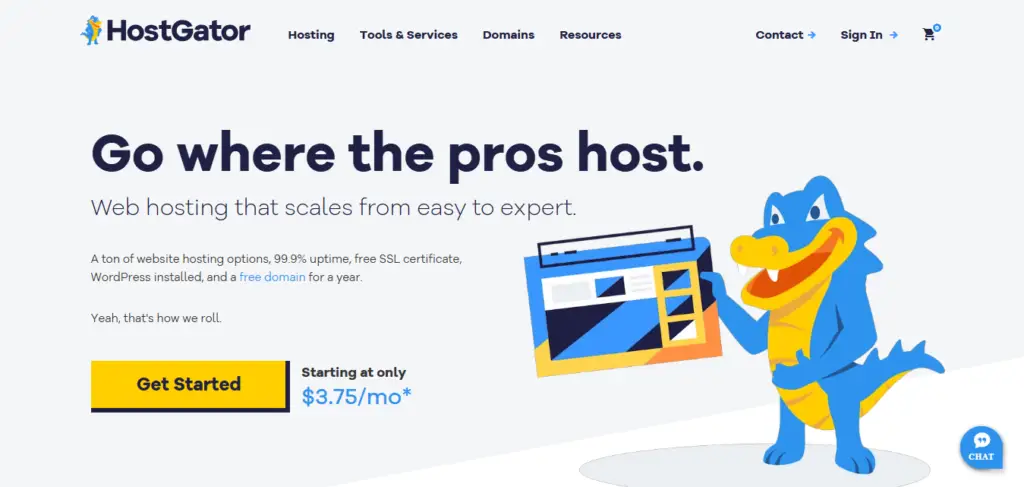
HostGator is a reliable web hosting service that offers industry-standard hosting.
Step 2: Choose Your Web Hosting Plan
The Hatchling Plan is a smart and budget-friendly choice to start with. It’s the most basic option and gives you everything you need to launch your blog. Plus, you can always upgrade later as your blog grows.

Step 3: Claim a Free Domain Name of Your Choice
After selecting your hosting plan above, you’ll land on this page to:
1️⃣ Register your domain (e.g., yourblogname.com) with Hostgator, and
2️⃣ Complete your sign-up
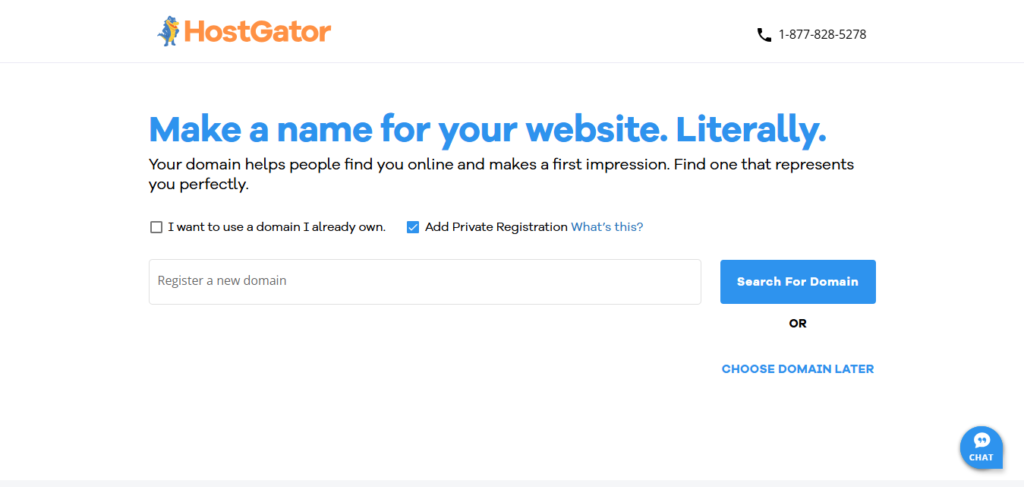
How to Choose the Perfect Blog Domain Name
✅ 1. Keep It Simple & Memorable
- Easy to spell (avoid slang/complex words)
- No hyphens/numbers (e.g., “Fit4Life” → confusing)
- Pronounceable (test: say it aloud—is it clear?)
✅ 2. Reflect Your Niche
- Include keywords (e.g., “TheBudgetTraveler.com” for finance tips)
- Avoid vague names (e.g., “LifestyleWithLisa.com” → too broad)
✅ 3. Short = Strong
- Ideal length: 6–14 characters
- Compare: “BakingAdventures.com” (17 chars) vs “BakeWise.com” (8 chars)
✅ 4. Future-Proof It
- Works if you expand topics (e.g., “YogaWithGrace.com limits content)
- Check trademark conflicts (use USPTO.gov)
✅ 5. Extensions Matter
- .com is best (trusted, easy to recall)
- Avoid obscure TLDs (.blog, .space) unless branding demands it
💡 Pro Tip: Find Unique Blog Name Ideas Relevant for Different Niches
Step 4: Select Your Hosting Subscription Period
Important Selection Tip:
- Choose the Hatchling plan (shown on the right side)
- Select your subscription period:
- 1 year (recommended minimum)
- 36 months (best value if affordable)
Pick what fits your budget – you can always upgrade later!
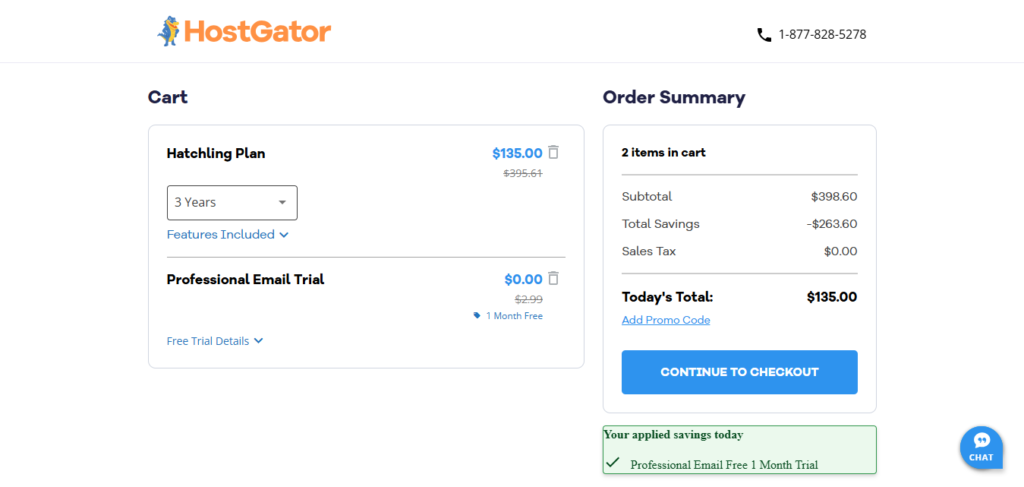
Step 5: Create Your HostGator Account
Provide your account sign up information like your name, email, password, etc to create your account.
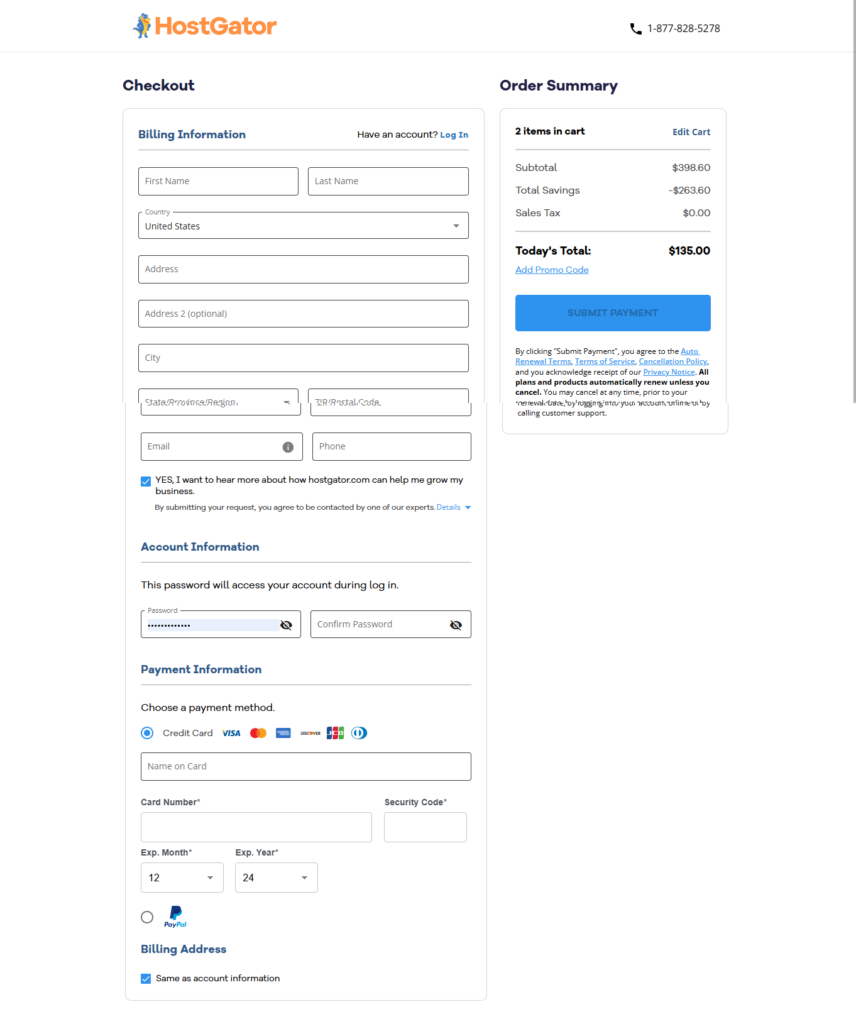
Enter the coupon code “SNAPPY” and check if there is a discount at the
moment. Discounts are not always available.
Preview your information before checkout.
Step 6: Install WordPress Within Your HostGator Account
✅ Action Required:
After completing your HostGator signup, follow these simple steps to install WordPress:
- Log in to your HostGator account
- Locate and click the “WordPress” section
- Follow the prompts to create your WordPress account
- You’ll be automatically logged into WordPress
That’s it! You’re now ready to:
- Start publishing blog posts
- Customize your site’s design
- Build your pages
Pro Tip: The installation typically takes less than 5 minutes. If you don’t immediately see the WordPress option, check under “Website” or “Software” in your HostGator dashboard.
Step 7: Pick a Theme for Your Blog
Once selected, you can customize colors, fonts, and layout to make it truly your own. Themes are pre-designed website templates that control how your blog looks and feels.
Browse available themes, preview how they look, and choose one that fits your style or niche.
Here’s a simplified way to choose a suitable WordPress blogging theme after you’ve logged into your WordPress admin area;
- Navigate to Themes: On the left-hand sidebar of your WordPress admin dashboard, hover over “Appearance” and click on “Themes.”
- Explore the Theme Library: This is where you’ll find a vast collection of free and paid themes. You can use the search bar at the top to find themes by keyword (browse by popular features, e.g., “grid layout,” “responsive”).
- Filter Your Options: You can use the filters on the left side of the page to narrow down your search. Here are some key filters for your blog:
- Features: Look for themes with features like post formats (galleries, videos), image sliders, social media integration, and customization options.
- Layout: You can consider layouts with a clean and modern aesthetic, grid layouts ideal for showcasing outfits, and responsive design to ensure your blog looks modern and good on all devices.
- Preview Before You Commit: Once you find a theme that interests you, hover over it and click “Preview.” This will allow you to see a live demo of the theme’s layout and features.
- Read Reviews and Ratings: Check out the reviews and ratings left by other users. This can give you valuable insights into the theme’s ease of use, customization options, customer support, and downsides.
- Mobile-Friendly is a Must: In today’s world, ensure the theme you select is responsive and displays well on mobile devices. Lots of visitors coming to your blog will be coming from mobile devices so ensure that your theme is mobile-friendly by using the preview function to check how it looks on mobile and other screens. This is very advisable.
- Consider Paid Themes: If you don’t find what you like with free themes you can use premium or paid themes with better or more attractive appearance and features. This is entirely optional and often not advisable for complete beginners who still don’t fully understand WordPress well enough.
Step 8: Customize Your Blog’s Core Pages and Start Publishing
- Dive into your theme’s settings to play with colors, fonts, and layouts. This is where your brand’s personality shines!
- Pro tip: Most themes include ready-made templates for key pages (About, Contact, Home). Tweak them to save time—no design degree needed.
- You can start publishing your first post to edit and see how it looks.
🎉 Congrats! You’ve officially launched a fully functional blog — you’re now ready to share your content with the world and start monetizing your efforts!
How To Write Your First Blog Post
- Go to Posts > Add New: In your WordPress dashboard, go to the “Posts” section and click “Add New.”
- Create a Title and Content: Write your first blog post by adding a title and creating the content.
- Publish: When you’re ready, click “Publish” to make your first post live!
Here is “How To Write A Blog Post Step-by-Step“
How to Monetize Your Blog and Make Money
While monetization options are limited on free blogging platforms, Here are the two most popular ways to monetize your blog and start makign money.
[1]. Display Ads
There are various ad networks you can join. Some of the most popular ones include:
- Google AdSense: Great for beginners. It’s easy to apply, and they place relevant ads on your site on the content displayed on a page.
- Mediavine: For bloggers with 50,000 sessions/page views per month. Known for high payouts.
- AdThrive: Requires at least 100,000 monthly page views, offering premium ad rates.
- Ezoic: Accepts lower-traffic blogs and offers decent ad placements.
Tip: Start with Google AdSense, when your traffic grows you can then apply to higher paying ad networks like Mediavine or AdThrive with much higher payouts.
[2]. Affiliate Marketing
Sign up for affiliate programs that align with your blog’s niche.
Here are some popular choices:
- Amazon Associates Program: Ideal for almost any niche that talks about physical-related products. Amazon offers a wide range of physical products in many niches or industries.
- ShareASale: A marketplace offering many affiliate products across various industries both physical and software-related products.
- CJ Affiliate: Another broad network for different affiliate products and services.
- Impact: Focuses on more prominent brands and high-quality affiliate products, mainly software products and some physical products.
All of these above are affiliate networks where you can join multiple affiliates offers to promote and manage them in the same platform.
- Niche-specific programs: You can also find single-in-house affiliate products. Look for affiliate programs directly related to your niche, such as web hosting companies for tech bloggers or beauty brands for fashion bloggers, etc.
Tip: Only promote products that are relevant and valuable to your audience to build trust and increase conversion rate due to product relevance to them.
As you grow your blog traffic you may need to diversify to other methods of monetization. Like the ones mentioned here, “7 Main Ways To Monetize Your Blog And Make Money“.
Post End.
The Fastest Way to Make $10,000/month as a New Blogger
Want to turn your blog into a serious income stream? Here’s a simple, beginner-friendly roadmap that can help you grow your blog to $10,000/month — even if you’re just starting out.
1. Set Up Your Blog with HostGator
Your first step is choosing the right platform. HostGator makes it super easy for beginners. You get:
- Affordable and reliable hosting
- A free domain
- One-click WordPress installation
With HostGator, your blog can be up and running in just a few minutes.
👉 Launch Your Blog with HostGator
2. Pick a Profitable Niche
Choose a niche that’s both profitable and something you’re passionate about. Don’t overthink it — you can always refine your niche after launching. The key is to:
- Focus on solving a specific audience’s problems
- Stick to one topic to build authority and trust
3. Create High-Impact Content
Start with “money posts” — the types of blog posts that are great for affiliate income or ad revenue. These posts typically:
- Solve high-demand problems
- Target keywords with strong search potential
- Promote products or services your audience needs
Then, add supporting content around those topics to boost your SEO and traffic.
Need help with content ideas? Check out our list of travel blog post topics — many work across different niches!
4. Follow These Success Rules
- Stick to One Niche: Don’t try to cover everything — focus and become known for one topic.
- Publish Quality Content: Every post should offer real value, not just words.
- Have a Content Plan: Set clear goals — like how many posts per week and how you’ll promote them.
Final Thoughts
With the right tools and a clear strategy, reaching $10,000/month from your blog is very possible — often within 6 to 12 months. HostGator gives you the foundation. The rest is about staying focused, being consistent, and serving your audience well.








